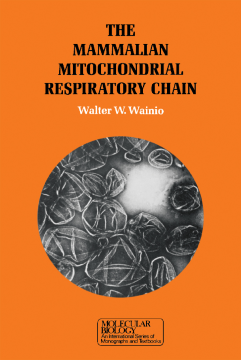
Additional Information
Book Details
Abstract
The Mammalian Mitochondrial Respiratory Chain provides the vocabulary related to the mitochondrial respiratory chain in mammalian species. It explores the heterogeneous nature of mitochondria, the mammalian mitochondrial cytochromes, the concept of a respiratory chain for the oxidation of substrates, the cytochrome and non-cytochrome components of the chain, and the role of the respiratory chain in energy conservation.
Organized into five chapters, this volume begins with an overview of the structure and composition of mitochondria in heart, liver, kidney, and brain before turning to the NADH oxidase system and its ability to generate one additional high-energy bond for every pair of electrons transferred compared to the succinate oxidase system. It also describes electron transfer in the respiratory chain and inhibitors of the respiratory chain such as antimycin A, along with differences in the pathways of electrons from succinate, choline, and NADH to oxygen as well as systems mediated by electron-transferring flavoprotein. The reader is also introduced to the processes involved in the fragmentation, extraction, and recombination of mitochondria; artificial electron acceptors such as phenazine methosulfate and artificial electron donors such as ascorbate and tetramethyl-p-phenylenediamine; and the role of flavoproteins, including flavin mononucleotide and flavin adenine dinucleotide, in electron transport. The book concludes with a chapter that explains how the oxidation-reductions of the respiratory chain release energy in discrete packets.
Graduate students and beginning researchers in biology will find this book extremely helpful.
